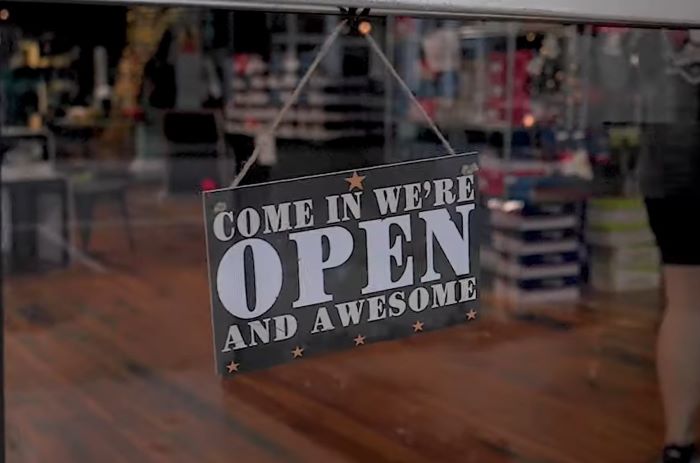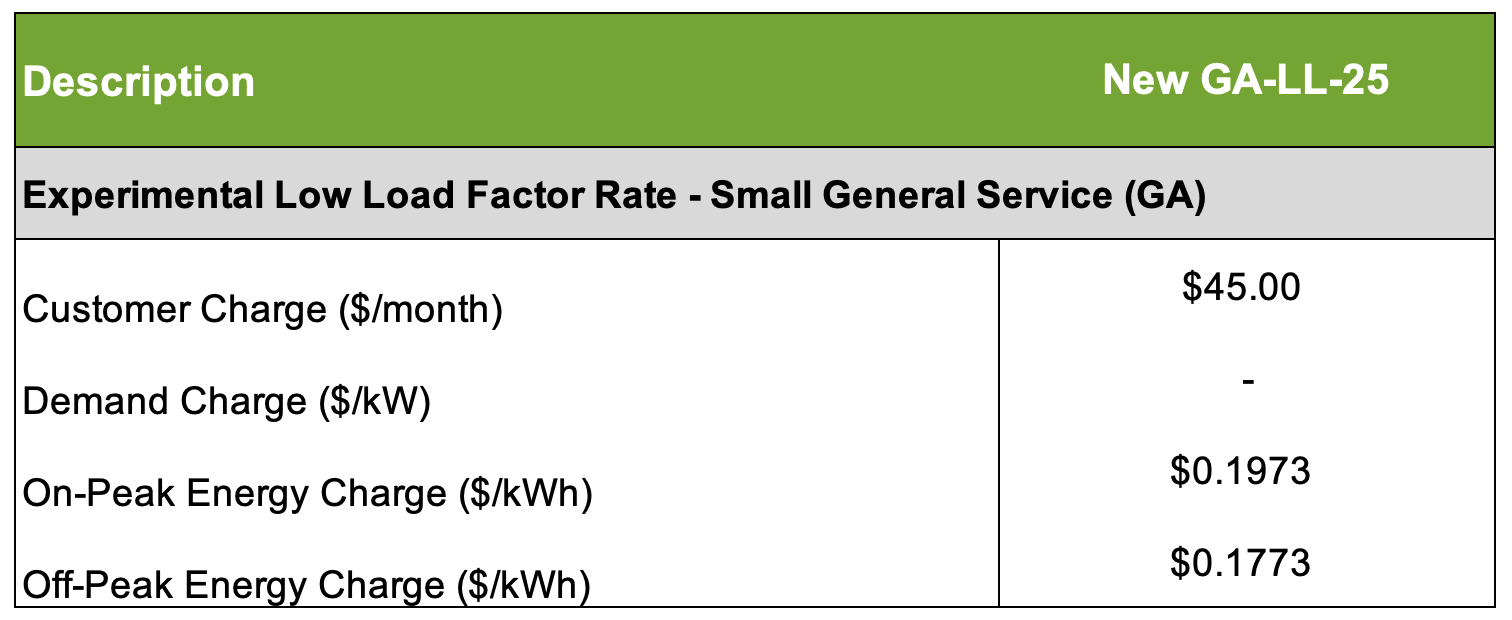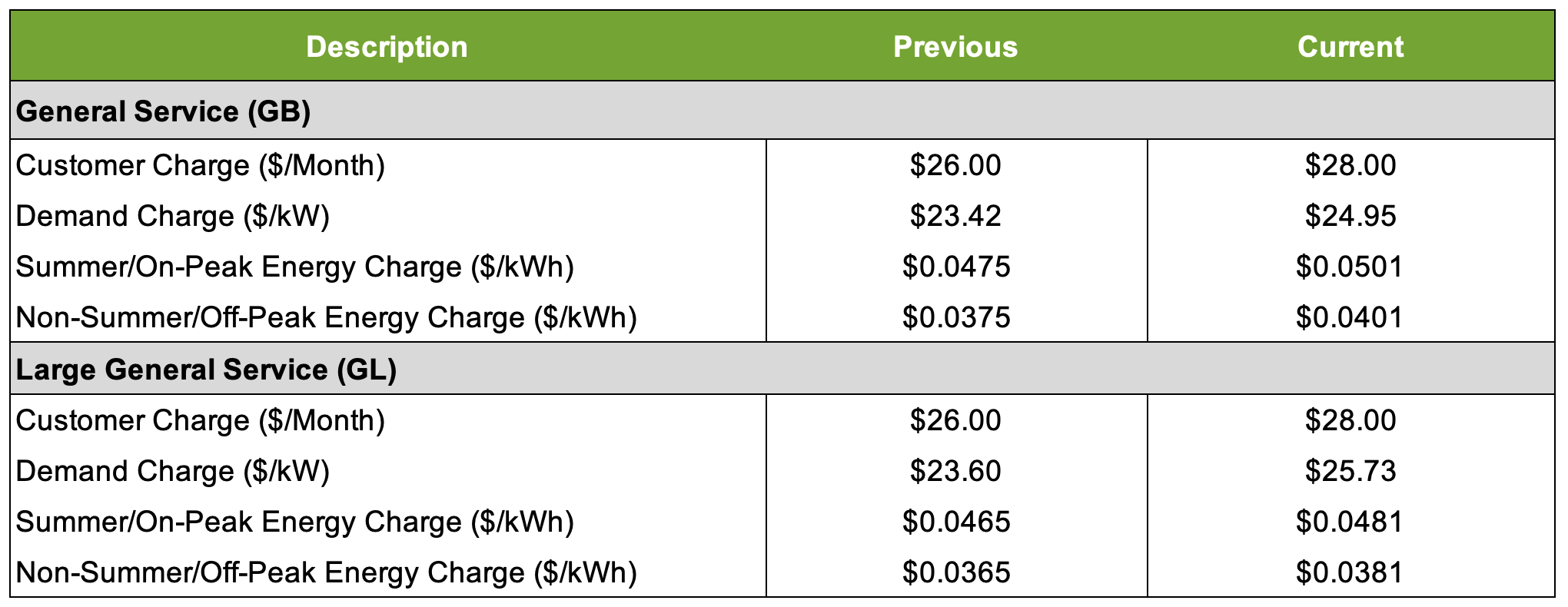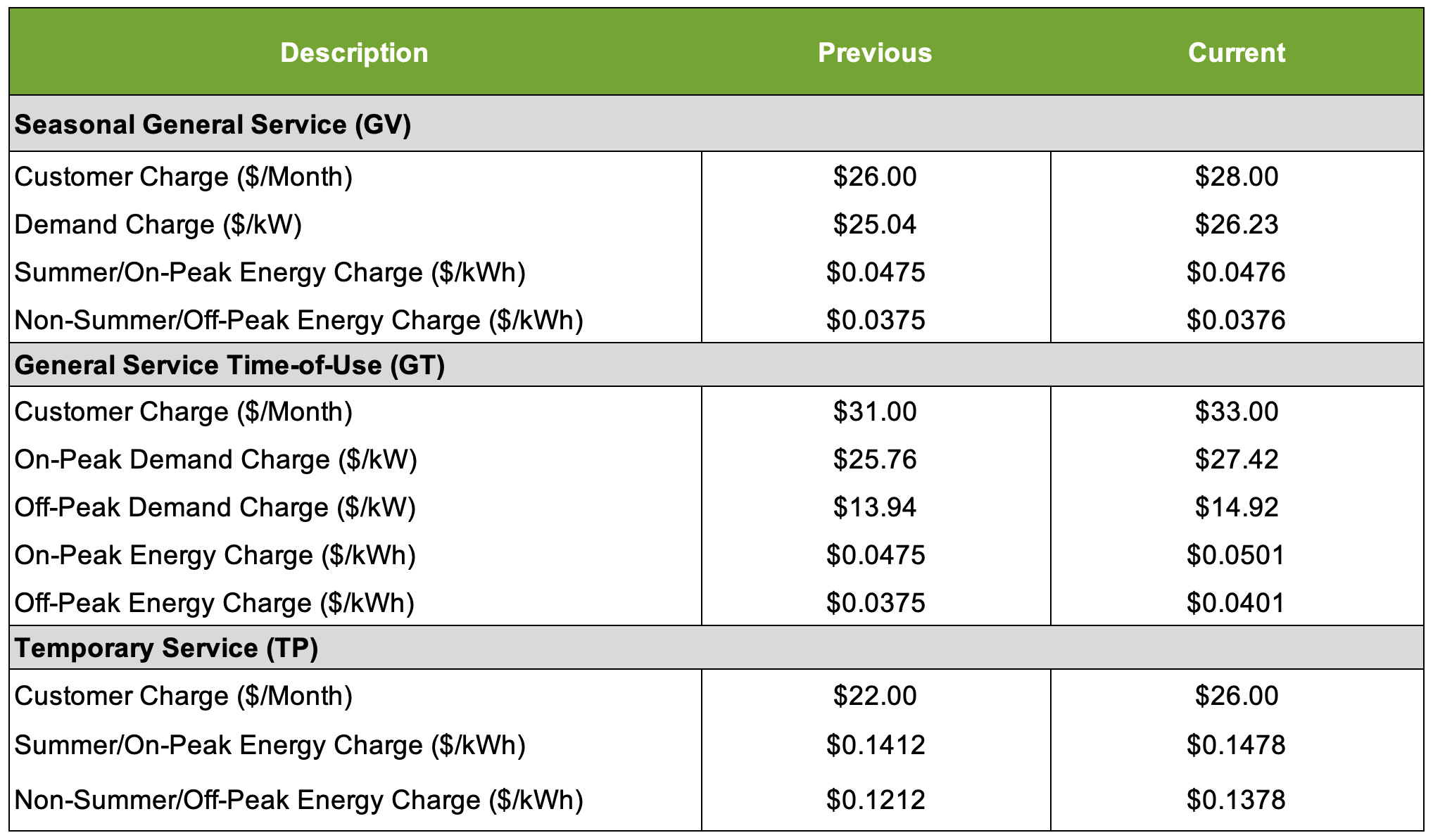Commercial Customers

Santee Cooper approved a new base rate increase for its commercial customer class that includes updated time-of-use (TOU) energy rates for commercial customers. Under the new rates, which took effect with bills rendered on or after April 1, 2025, summer TOU on-peak energy periods are April through October from 3 p.m. to 7 p.m. every day. Non-summer on-peak TOU energy periods are November through March from 5 a.m. to 9 a.m. every day. These new commercial TOU periods are also applicable to the GT rate class.
Santee Cooper also approved a three-part rate structure that includes a demand charge for the GA class. The demand charge for the GA class is based on the highest 30-minute integrated demand for each customer.
Under new rates, it will be mandatory for all commercial customers with less than 50 kW of demand to be served on the GA rate schedule.
The GB rate schedule is mandatory for customers with demands between 50–300 kW, and the GL rate schedule is mandatory for distribution voltage customers with demands exceeding 300 kW. All commercial customers may elect the optional seasonal GV or TOU GT rate.
Small General Service
The small commercial rate, General Service (GA), is for small business customers that use less than 50 kW in demand, and a demand charge has been added to make it a three-part rate.

We created and approved a new experimental rate for low-load factor customers that meets the requirements of the GA rate. This experimental, voluntary two-part rate provides an alternative option for customers with very low usage and/or load factors that will mitigate bill increases for those customers.

What is a Three-Part Rate Structure?
The new rates for GA (small commercial) customers include the adoption of a three-part electric rate that charges customers for their share of the total electricity Santee Cooper must provide during peak times. The three-part rate also increases customers’ ability to lower their bills by changing when they use the most electricity each day.
The three-part rate divides billed amounts between the cost to serve the customer account (customer charge), the total amount of electricity consumed by that customer over a customer’s monthly billing cycle (energy charge), and – new – the most electricity the customer uses at one time during their monthly billing cycle (demand charge).
Here's the three-part rate breakdown (actual amounts are in the chart above):
- Customer Charge (flat rate): The customer charge is a fixed charge unrelated to energy usage. It covers ongoing fixed charges, such as billing, accounting, collections and customer service, as well as some fixed installation and upkeep costs for things including meters, wires and transformers.
- Energy Charge (kWh): The energy charge covers the amount of electricity used during a billing period and variable costs of producing electricity, including purchased power and a base amount for fuel. It’s calculated by multiplying the total energy used by the per-kWh charge for the month. The energy charge will vary if you use more or less electricity.
- Demand Charge (kW): Demand is measured in kilowatts (kW) and represents the maximum amount of energy you used over the highest 30 minutes each month. The demand charge is determined by multiplying the maximum demand you incurred by the demand rate.
Tips on How You Can Manage Your Demand and Energy Usage
- Consider operational changes that would stagger the time that you use equipment with high energy demands, especially during the peak hours.
- Energy-efficiency upgrades can improve the look of your business and help your bottom line. We offer free energy assessments through our Small Business Energy Saver Program, and the program may pay for a significant portion of your project costs. If you don’t qualify for the Small Business Energy Saver Program, we have our Commercial Prescriptive Rebate Program which also can help offset the cost of energy efficiency upgrades.
- Invest in energy monitoring systems to receive alerts when your business is approaching demand thresholds that you would like to stay below.
- Utilize smart or programmable thermostats to effectively manage temperature set points. Santee Cooper offers rebates for smart thermostats.
Medium and Large General Service

Other Commercial

Learn More
If you have questions about how the rate increase may impact your bill, please contact a Commercial Energy Advisor at commercial.energy@santeecooper.com.